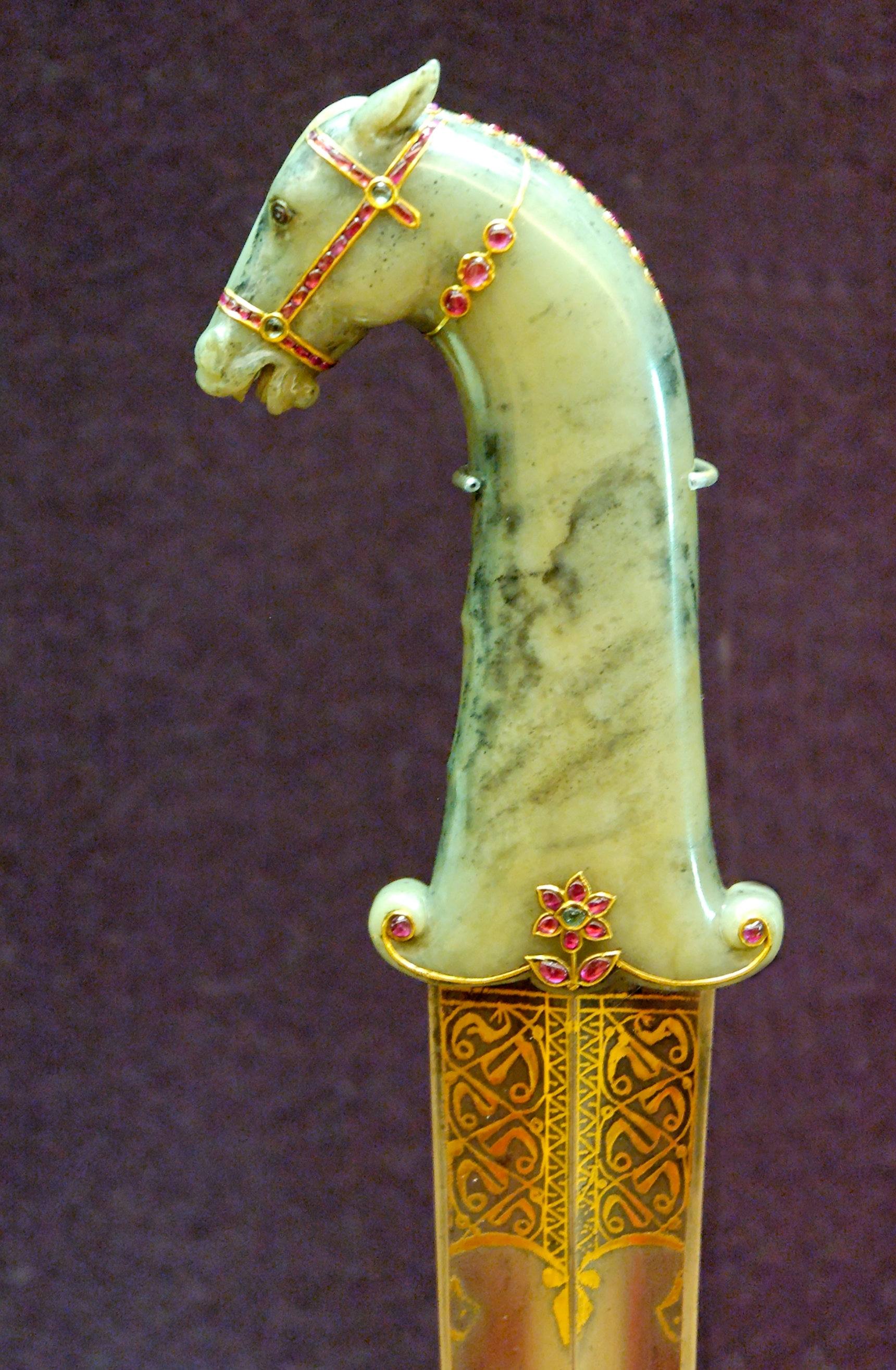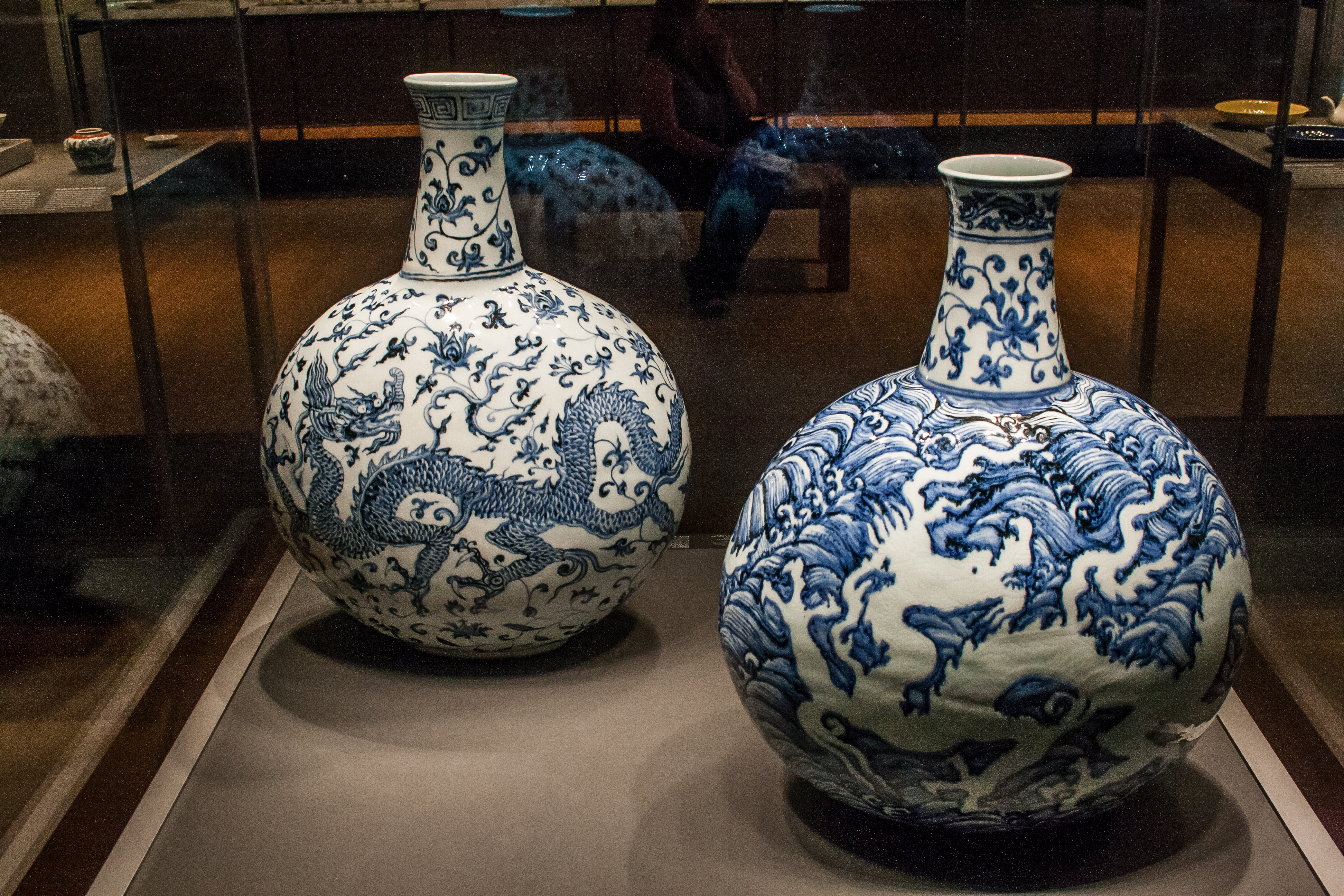|
Cong (vessel)
A ''cong'' () is a form of ancient Chinese jade artifact. It was later also used in ceramics. History The earliest ''cong'' were produced by the Xuejiagang culture and the Liangzhu culture (3400 BC, 3400–2250 BC); later examples date mainly from the Shang dynasty, Shang and Zhou dynasty, Zhou dynasties. Interest in the jade shape developed during the 12th–13th century Song dynasty. The shape continued to be used in ceramic and metalwork for centuries.BBC TV documentary: ''China in Six Easy Pieces'' (2013) presented by Lars Tharp http://www.bbc.co.uk/programmes/b036r5cx Description A ''cong'' is a straight tube with a circular bore and square outer section with more or less convex sides. The outer surface is divided vertically or horizontally such that the whole defines a hollow cylinder embedded in a partial rectangular block. Proportions vary: a ''cong'' may be squat or taller than it is wide. The outer faces are sometimes decorated with mask-like faces, which may ... [...More Info...] [...Related Items...] OR: [Wikipedia] [Google] [Baidu] |
:Category:Chinese Words And Phrases
For articles on words and phrases related to a specific area of China, or to a specific spoken variant, please refer to one of the subcategories. Words A word is a basic element of language that carries meaning, can be used on its own, and is uninterruptible. Despite the fact that language speakers often have an intuitive grasp of what a word is, there is no consensus among linguists on its ... Words and phrases by language {{CatAutoTOC ... [...More Info...] [...Related Items...] OR: [Wikipedia] [Google] [Baidu] |
Song Dynasty
The Song dynasty ( ) was an Dynasties of China, imperial dynasty of China that ruled from 960 to 1279. The dynasty was founded by Emperor Taizu of Song, who usurped the throne of the Later Zhou dynasty and went on to conquer the rest of the Five Dynasties and Ten Kingdoms period#Ten Kingdoms, Ten Kingdoms, ending the Five Dynasties and Ten Kingdoms period. The Song frequently came into conflict with the contemporaneous Liao dynasty, Liao, Western Xia and Jin dynasty (1115–1234), Jin dynasties in northern China. After retreating to southern China following attacks by the Jin dynasty, the Song was eventually conquered by the Mongol-led Yuan dynasty. The History of the Song dynasty, dynasty's history is divided into two periods: during the Northern Song (; 960–1127), the capital was in the northern city of Bianjing (now Kaifeng) and the dynasty controlled most of what is now East China. The #Southern Song, 1127–1279, Southern Song (; 1127–1279) comprise the period following ... [...More Info...] [...Related Items...] OR: [Wikipedia] [Google] [Baidu] |
Hardstone Carving
Hardstone carving, in art history and archaeology, is the artistic carving of semi-precious stones (and sometimes gemstones), such as jade, rock crystal (clear quartz), agate, onyx, jasper, serpentinite, or carnelian, and for objects made in this way. Normally the objects are small, and the category overlaps with both jewellery and sculpture. Hardstone carving is sometimes referred to by the Italian term ''pietre dure''; however, ''pietra dura'' (with an "a") is the common term used for stone inlay work, which causes some confusion. From the Neolithic period until about the 19th century such objects were among the most highly prized in a wide variety of cultures, often attributed special powers or religious significance, but today coverage in non-specialist art history tends to be relegated to a catch-all decorative arts or "minor arts" category. The types of objects carved have included those with ritual or religious purposes, engraved gems as signet rings and other kinds of seal ... [...More Info...] [...Related Items...] OR: [Wikipedia] [Google] [Baidu] |
Chinese Pottery
Chinese ceramics are one of the most significant forms of Chinese art and ceramics globally. They range from construction materials such as bricks and tiles, to hand-built pottery vessels fired in bonfires or kilns, to the sophisticated Chinese porcelain wares made for the imperial court and for export. The oldest known pottery in the world was made during the Paleolithic at Xianrendong Cave, Jiangxi Province, China. Chinese ceramics show a continuous development since pre-dynastic times. Porcelain was a Chinese invention and is so identified with China that it is still called "china" in everyday English usage. Most later Chinese ceramics, even of the finest quality, were made on an industrial scale, thus few names of individual potters were recorded. Many of the most important kiln workshops were owned by or reserved for the emperor, and large quantities of Chinese export porcelain were exported as diplomatic gifts or for trade from an early date, initially to East Asia ... [...More Info...] [...Related Items...] OR: [Wikipedia] [Google] [Baidu] |
Chinese Porcelain
Chinese ceramics are one of the most significant forms of Chinese art and ceramics globally. They range from construction materials such as bricks and tiles, to hand-built pottery vessels fired in bonfires or kilns, to the sophisticated Chinese porcelain wares made for the imperial court and for export. The oldest known pottery in the world was made during the Paleolithic at Xianrendong Cave, Jiangxi Province, China. Chinese ceramics show a continuous development since pre-dynastic times. Porcelain was a Chinese invention and is so identified with China that it is still called "china" in everyday English usage. Most later Chinese ceramics, even of the finest quality, were made on an industrial scale, thus few names of individual potters were recorded. Many of the most important kiln workshops were owned by or reserved for the emperor, and large quantities of Chinese export porcelain were exported as diplomatic gifts or for trade from an early date, initially to East Asia a ... [...More Info...] [...Related Items...] OR: [Wikipedia] [Google] [Baidu] |
Archaeological Artefact Types
Archaeology or archeology is the study of human activity through the recovery and analysis of material culture. The archaeological record consists of artifacts, architecture, biofacts or ecofacts, sites, and cultural landscapes. Archaeology can be considered both a social science and a branch of the humanities. It is usually considered an independent academic discipline, but may also be classified as part of anthropology (in North America – the four-field approach), history or geography. The discipline involves surveying, excavation, and eventually analysis of data collected, to learn more about the past. In broad scope, archaeology relies on cross-disciplinary research. Archaeologists study human prehistory and history, from the development of the first stone tools at Lomekwi in East Africa 3.3 million years ago up until recent decades. Archaeology is distinct from palaeontology, which is the study of fossil remains. Archaeology is particularly important for lear ... [...More Info...] [...Related Items...] OR: [Wikipedia] [Google] [Baidu] |
Archaeological Artifacts Of China
Archaeology or archeology is the study of human activity through the recovery and analysis of material culture. The archaeological record consists of artifacts, architecture, biofacts or ecofacts, sites, and cultural landscapes. Archaeology can be considered both a social science and a branch of the humanities. It is usually considered an independent academic discipline, but may also be classified as part of anthropology (in North America – the four-field approach), history or geography. The discipline involves surveying, excavation, and eventually analysis of data collected, to learn more about the past. In broad scope, archaeology relies on cross-disciplinary research. Archaeologists study human prehistory and history, from the development of the first stone tools at Lomekwi in East Africa 3.3 million years ago up until recent decades. Archaeology is distinct from palaeontology, which is the study of fossil remains. Archaeology is particularly important for learni ... [...More Info...] [...Related Items...] OR: [Wikipedia] [Google] [Baidu] |
Bi (jade)
The ''bi'' ( zh, 璧, bì) is a type of circular ancient Chinese jade artifact. The earliest ''bi'' were produced in the Neolithic period, particularly by the Liangzhu culture ( 3400– 2250 BCE).Teaching Chinese Archaeology, object 3 - NGA Later examples date mainly from the Shang, Zhou and Han dynasties. They were also made in . < ...
|
Taotie
The ''taotie'' is an ancient Chinese mythological creature that was commonly emblazoned on bronze and other artifacts during the 1st millennium BCE. ''Taotie'' are one of the Four Perils in Chinese classics like the ''Classic of Mountains and Seas'', alongside the ''Hundun'', ''Qiongqi'', and ''Taowu''. The ''Taotie'' is often represented as a Motif (art), motif on ''Ding (vessel), dings'', which are Chinese ritual bronzes, Chinese ritual bronze vessels from the Shang dynasty, Shang () and Zhou dynasty, Zhou dynasties (256 BCE). The design typically consists of a zoomorphic mask, described as being frontal, bilaterally symmetrical, with a pair of raised eyes and typically no lower jaw area. Some argue that the design can be traced back to jade pieces found at Neolithic sites belonging to the Liangzhu culture (3310–2250 BCE). There are notable similarities with the painted pottery of the Lower Xiajiadian culture (2200–1600 BCE). Etymology Although modern s ... [...More Info...] [...Related Items...] OR: [Wikipedia] [Google] [Baidu] |
Lars Tharp
Lars Broholm Tharp (born 27 March 1954, Copenhagen, Denmark)THARP, Lars Broholm , '''', , 2011; online edn, , December 2010 (accessed 23 September 2011). is a Danish-born British historian, lecturer and broadcaster, and one of the longest running 'experts' on the |
Zhou Dynasty
The Zhou dynasty ( ) was a royal dynasty of China that existed for 789 years from until 256 BC, the longest span of any dynasty in Chinese history. During the Western Zhou period (771 BC), the royal house, surnamed Ji, had military control over territories centered on the Wei River valley and North China Plain. Even as Zhou suzerainty became increasingly ceremonial over the following Eastern Zhou period (771–256 BC), the political system created by the Zhou royal house survived in some form for several additional centuries. A date of 1046 BC for the Zhou's establishment is supported by the Xia–Shang–Zhou Chronology Project and David Pankenier, but David Nivison and Edward L. Shaughnessy date the establishment to 1045 BC. The latter Eastern Zhou period is itself roughly subdivided into two parts. During the Spring and Autumn period (), power became increasingly decentralized as the authority of the royal house diminished. The Warring States ... [...More Info...] [...Related Items...] OR: [Wikipedia] [Google] [Baidu] |
Jade Cong King, 2018-06-09 01
Jade is an umbrella term for two different types of decorative rocks used for jewelry or Ornament (art), ornaments. Jade is often referred to by either of two different silicate mineral names: nephrite (a silicate of calcium and magnesium in the amphibole group of minerals), or jadeite (a silicate of sodium and aluminum in the pyroxene group of minerals). Nephrite is typically green, although may be yellow, white or black. Jadeite varies from white or near-colorless, through various shades of green (including an emerald green, termed 'imperial'), to Lavender (color), lavender, yellow, orange, brown and black. Rarely it may be blue. Both of these names refer to their use as gemstones, and each has a mineralogically more specific name. Both the amphibole jade (nephrite) and pyroxene jade are mineral aggregates (rocks) rather than mineral species. Nephrite was deprecated by the International Mineralogical Association as a mineral species name in 1978 (replaced by tremolite). The ... [...More Info...] [...Related Items...] OR: [Wikipedia] [Google] [Baidu] |









